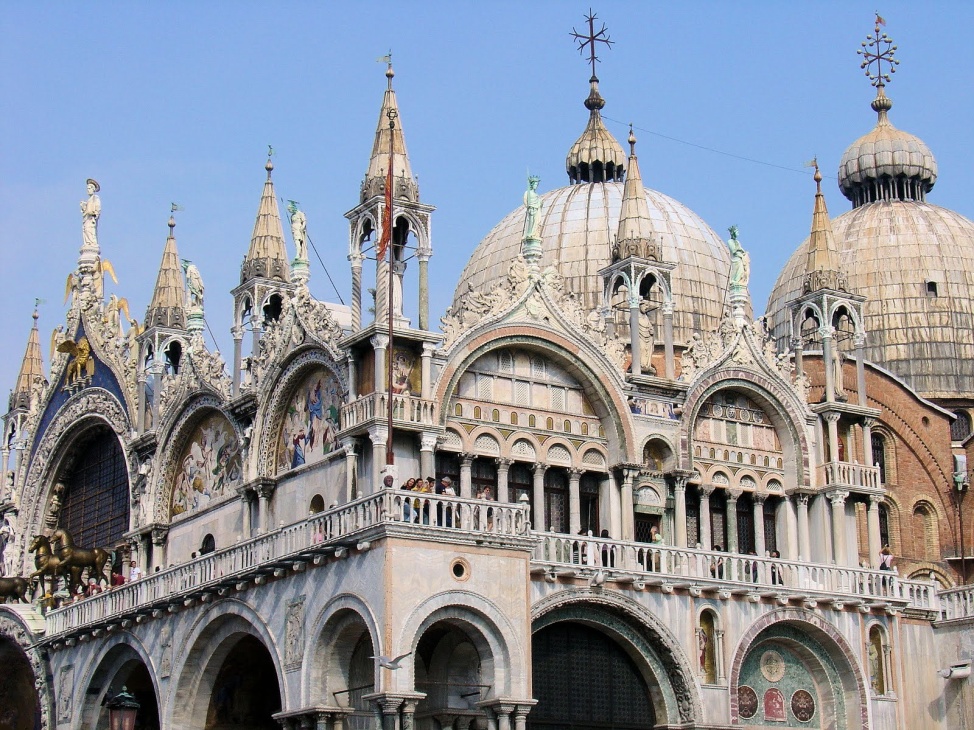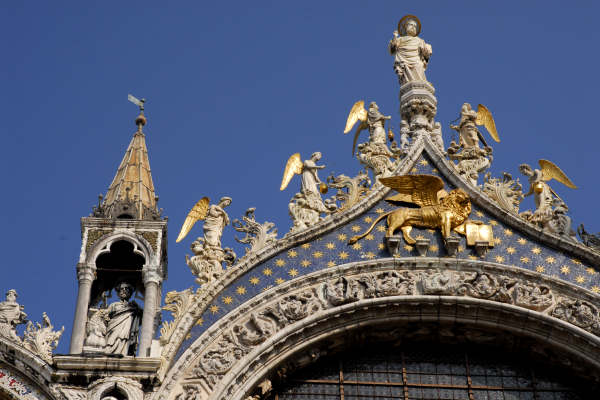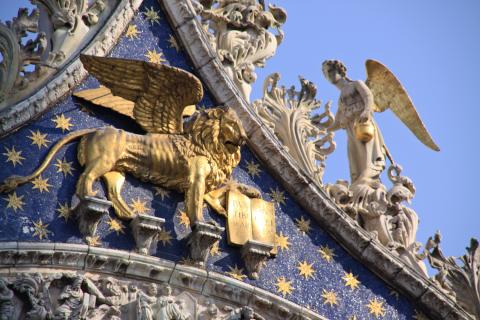
The Patriarchal Cathedral Basilica of Saint Mark (officially known in Italian as the Basilica Cattedrale Patriarcale di San Marco and commonly known as Saint Mark’s Basilica) is the cathedral church of the Roman Catholic Archdiocese of Venice, northern Italy. It is the most famous of the city’s churches and one of the best known examples of Italo-Byzantine architecture. It lies at the eastern end of the Piazza San Marco, adjacent and connected to the Doge’s Palace. Originally it was the chapel of the Doge, and has only been the city’s cathedral since 1807, when it became the seat of the Patriarch of Venice, archbishop of the Roman Catholic Archdiocese of Venice, formerly at San Pietro di Castello.
For its opulent design, gold ground mosaics, and its status as a symbol of Venetian wealth and power, from the 11th century on the building has been known by the nickname Chiesa d’Oro (Church of gold). During the 13th century the emphasis of the church’s function seems to have changed from being the private chapel of the Doge to that of a “state church”, with increased power for the procurators. It was the location for the great public ceremonies of the state, such as the installation and burials of Doges, though as space ran out and the demand for grander tombs increased, from the 15th century Santi Giovanni e Paolo became the usual burial place. The function of the basilica remained the same until 1807, after the end of the Venetian Republic, when the basilica finally became subject to the local bishop, the Patriarch of Venice, though from the 12th century he had had a throne there, opposite the doge’s. The transfer of the see was ordered by Napoleon during his period of control of Venice. Before this, Venice’s cathedral from 1451 was the much less grand San Pietro di Castello.
The procurators, an important organ of the Republic of Venice, were in charge of administration; their seats were the Procuratie, in St Mark’s Square. All building and restoring works were directed by the protos: great architects such as Jacopo Sansovino and Baldassarre Longhena held the office. The doge himself appointed a special group of clergy led by the primicerio. Procurators and protos still exist and perform the same tasks for the Patriarchate.
The interior is based on a Greek cross, with each arm divided into three naves with a dome of its own as well as the main dome above the crossing. The dome above the crossing and the western dome are bigger than the other three. This is based on Constantine’s Church of the Holy Apostles in Constantinople. The marble floor (12th century, but underwent many restorations) is entirely tessellated in geometric patterns and animal designs. One particular panel in the pavement shows two cocks carrying a trussed-up fox, has been interpreted politically by some, as a reference to the French conquest of Milan in the Italian Wars. Others see it as a sacred symbol of the faithful wish for immortality, with the victory of the cock and “analogous to the hope of resurrection, the victory of the soul over death”. The techniques used were opus sectile and opus tessellatum. The lower register of walls and pillars is completely covered with polychrome marble slabs. The transition between the lower and the upper register is delimited all around the basilica by passageways which largely substituted the former galleries.



